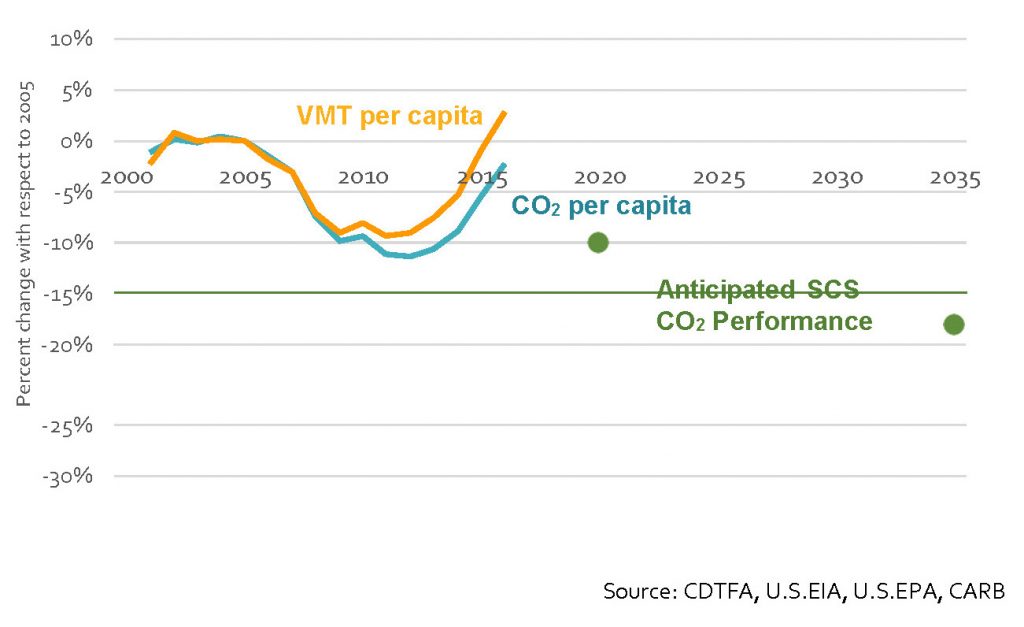California’s major urban regions are falling behind in getting people out of their solo drives in favor of walking, biking, transit and carpooling, according to a major report last month from the California Air Resources Board. In short, the state will not meet its 2030 climate goals without more progress on reducing vehicle miles traveled (VMT):
 This result comes despite the decade-old passage of SB 375 (Steinberg, 2008), which promised to reorient land use and transportation around reduced driving. The lone exception appears to be the San Francisco Bay Area, which has seen steadily increasing transit ridership and decreasing solo driving to work as a percentage, according to the report.
This result comes despite the decade-old passage of SB 375 (Steinberg, 2008), which promised to reorient land use and transportation around reduced driving. The lone exception appears to be the San Francisco Bay Area, which has seen steadily increasing transit ridership and decreasing solo driving to work as a percentage, according to the report.
What are the stakes if California can’t start solving this problem in the next decade? A U.N. report on climate change recently concluded that limiting global warming to 1.5 C would “require more policies that get people out of their cars — into ride-sharing and public transportation, if not bikes and scooters — even as cars switch from fossil fuels to electrics.” In order to keep the world on track to stay within 1.5 Celsius, the report stated that emission reductions would have to “come predominantly from the transport and industry sectors” and that countries couldn’t just rely on zero-emission vehicles alone.
Yet as the report shows, California’s current land use policies are not helping with this goal. We need to discourage development in car-dependent areas while promoting growth close to jobs, as SB 50 would allow. And at the same time, we need to invest in better transit service. Otherwise, California and jurisdictions like it around the world will fail to avert the coming climate catastrophe.


